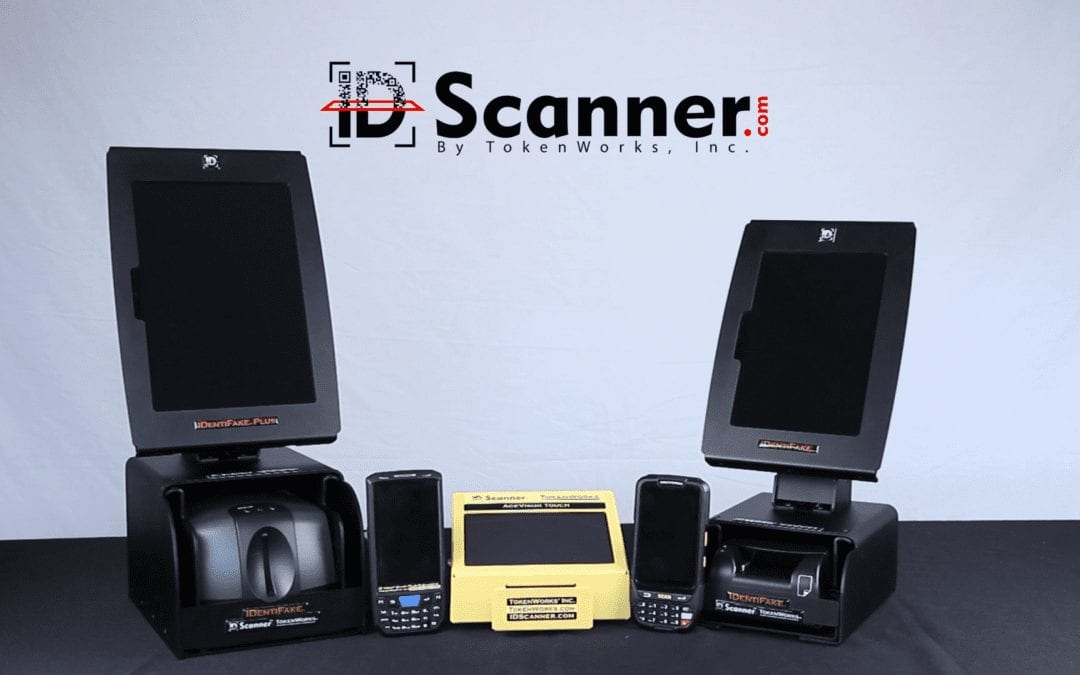Verify Age or Verify Age + Catch Fakes?
Choosing an ID scanner for your business can seem slightly overwhelming if you don’t know where to start or are unaware of current technology in use today. The first question you need to ask yourself when researching what to purchase is: do you want to solely verify age or do you also want to detect fake IDs? Many people don’t understand that verifying age and detecting fake or fraudulent IDs are different things. Before we dive into that, let’s break down what types of scanners are currently available.
Verify Age: Barcode Scanners
Barcode scanners scan the 2D barcodes you find on the back of ID cards. You scan the barcode, it reads the data encoded within it, and displays the data on screen. There are a few different types of barcode ID scanners – handheld devices, stationary devices, and phone apps. However, the handheld or stationary device are preferable to the phone app due to the fact that some customers might feel apprehensive to the fact that an employee is scanning their ID with what seems to be their personal cell phone, rather than a more official device. After all, you’ve gone through all the trouble to display professionalism so you definitely don’t want to tarnish that with an employee wielding an iPhone. Another issue is that fake ID producers across seas use these phone app scanners to make sure they pass and if they don’t – they fix the problem.
At this point, you’ll be immediately notified as to whether or not the ID is expired or if the customer is of valid age to purchase alcohol/tobacco, gamble, or whatever age-restricted service you’re providing. This can be very helpful for bouncers or servers that are apt to overlook age or miscalculate on visual inspection alone – they simply need to read what’s displayed on screen! Usually, the scanner will display a positive icon such as a green check or negative icon such as a red X to make it obvious. Two-thirds of tickets issued for serving a minor are a result of sting operations where the person checking the ID made a calculation error or didn’t bother taking the extra moment to check the birth date. With an ID scanner, your employees shouldn’t have this issue.
Now, a barcode scanner will most certainly catch some poor quality fakes that might otherwise pass visual inspection. For example, the barcode might be encoded with incorrect data or have no data whatsoever. Many low-quality fake IDs are encoded with the same data to save production time, despite each card looking different and displaying information. At this point, it’s up to the operator of the scanner to note this and turn down the ID.
Things get trickier with high-quality fake IDs. These IDs have the correct data encoded within them and are visually identical to authentic IDs. They might even mimic some hidden security features such as UV or infrared state seals on the card. To the human eye or a barcode scanner, these types of IDs will most likely go undetected, thus putting your business in danger of getting fined or shut down. These are the types of fake IDs most people don’t know about. Your business might be scanning countless IDs with a regular barcode scanner thinking you’re catching fakes. Reality check: not really.
Luckily, there is another type of scanner that will catch these fake IDs…
Verify Age + Catch Fakes: Forensic Scanners
The latest and greatest in ID scanner technology is forensic scanning. These types of scanners, sometimes called “box scanners” are larger and more obvious than small handheld barcode scanners. This feature alone will probably scare off would-be underage customers. But the most important factor here is that these scanners detect a majority of fake IDs, low quality to the best of the best.
How do they work? When a forensic scanner scans a license, they run the scanned image against a document library of over 1500 authentic documents and licenses – driver licenses, state IDs, military IDs, national IDs, voter card, etc. At this point, software compares security and design features between the scanned image and these authentic documents. We’re talking holograms, infrared (IR), ultraviolet (UV), optical character recognition (OCR), and microprint. In other words, nearly every single security feature on the scanned ID is being checked and compared with authentic IDs in the document library. If they pass, the software will list any security features that passed and where. If they fail, same deal – it will list the features that failed. Any features that neither pass nor fail will be listed with a question mark or similar icon – these should be inspected with caution, as well. The software will then accumulate all of these checks into one of two outcomes – pass or fail.
A forensic scanner is only as good as its operator. A young man walks up to a bouncer at a casino and gets his ID scanned by a top notch forensic ID scanner. The bouncer isn’t worried at all and allows the man to enter the venue after noting that his ID passed inspection. One problem: he was using his older brother’s valid ID. Even with the best equipment, you must be diligent of the ID their scanning against the person that actually hands them the ID, as well.
So… Verify Age or Verify Age + Catch Fakes?
Now that you know the difference between simply verifying age and the more complicated goal to catch fakes, you should have less trouble when choosing what to buy. Interesting in simply verifying age, keeping customer count, tagging customers (VIP/banned/etc.), and catching some low-grade fake IDs? Then buy yourself a barcode scanner, like IDVisor Smart. Want to do all that plus have the ability to detect and stop high-quality fake IDs? IDs which most college students are buying today overseas? Then consider buying a forensic ID scanner, like IDentiFake.
Want to learn more? Contact us over at TokenWorks by filling out the form below.

